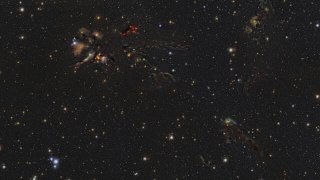
Astronomers have created a stunning mosaic of baby star clusters hiding in our galactic backyard.
The montage, published Thursday, reveals five vast stellar nurseries less than 1,500 light-years away. A light-year is nearly 6 trillion miles (9.7 trillion kilometers).
To come up with their atlas, scientists pieced together more than 1 million images taken over five years by the European Southern Observatory in Chile. The observatory’s infrared survey telescope was able to peer through clouds of dust and discern infant stars.
"We can detect even the faintest sources of light, like stars far less massive than the sun, revealing objects that no one has ever seen before,” University of Vienna's Stefan Meingast, the lead author, said in a statement.
The observations, conducted from 2017 to 2022, will help researchers better understand how stars evolve from dust, Meingast said.
The findings, appearing in the journal Astronomy and Astrophysics, complement observations by the European Space Agency's star-mapping Gaia spacecraft, orbiting nearly 1 million miles (1.5 million kilometers) away.
Get Tri-state area news delivered to your inbox. Sign up for NBC New York's News Headlines newsletter.
Gaia focuses on optical light, missing most of the objects obscured by cosmic dust, the researchers said.
U.S. & World
___
The Associated Press Health and Science Department receives support from the Howard Hughes Medical Institute’s Science and Educational Media Group. The AP is solely responsible for all content.



